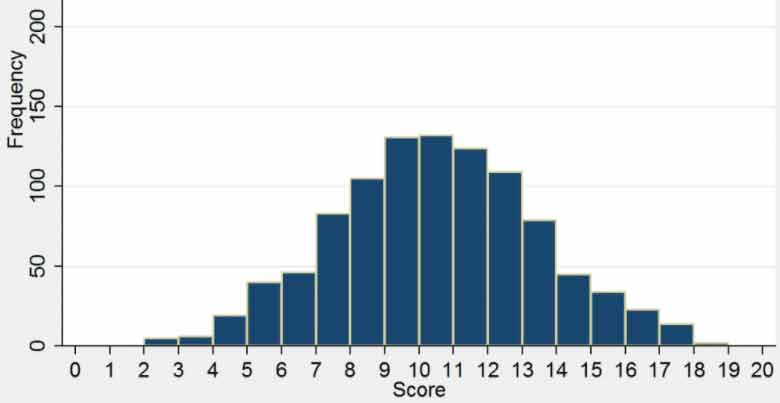Standard Deviation
The standard deviation is the calculation of the dispersion of a dataset relative to the average and is the square root of the variance measured. The standard deviation is calculated as a radical quadratic variance by evaluating the difference between each data point and the mean. If the data points are longer than average, the greater the disparity within the dataset. Thus, the more the data are distributed, the higher the norm.
Apart from reflecting population variability, standard deviations are also used to assess confidence in statistical findings. For instance, by measuring the predicted standard deviation in the results, the margin of error in polling data is calculated if the same poll is performed repeatedly.

The result is also known as the standard error of the estimate" or the "standard error of the mean" in terms of a mean. The standard deviation from all norms derived from that population is calculated if an endless number of samples were drawn, and the average was calculated for each piece.
The standard deviation of a population and the standard error of statistics (e.g., average) are entirely different but related (namely, by the inverse of the square root of the number of observations).
The reported survey margin of error is derived from the mean, standard mistake (or from the product of standard demographic deviation and the opposite of the square root of sample size), typically approximately twice the legal difference, the half-width of a 95% confidence interval.
Many researchers report the legal distinction in experimental data in science. By convention, only effects that are more than two standard deviations far away from a null expectation are statistically significant, which distinguishes standard random error or variance in measurements from likely correct results or associations.
Suppose only a data sample from one population is available. In that case, the above quantity used for such data or an unbiased estimated population standard difference can be connected to the standard deviation of the sample or sample standard deviation as a modified quantity (the standard deviation of the entire population).
The formula of Standard Deviation
Standard Deviation = n−1 ∑I = 1n (xi−x) 2
Standard deviation estimation
The default variance shall be determined according to:
By adding all data points and dividing by the number of data points, the average value is determined.
The variance for every data point is determined by extracting the average from the data point value. Each value is squared, and the results are summarized. The product is then separated into less than one data point.
Then you will find the average difference from the square root of the difference—which results from no. 2.
Standard deviation is particularly useful for calculating market and security volatility in investment and trading strategies and predicting performance patterns. For example, as the fund tries to replicate the index, an index fund would likely have a low deferral against its benchmark index.
On the other hand, one can anticipate a significant standard variance from relative equity indexes in aggressive growth funds, as their portfolio managers are making bold bets on higher than average returns.
There is no inherently preferable low standard deviation. It all depends on investment and the ability of the investor to take risks. Investors should take their uncertainty tolerance and their overall investment goals into consideration in coping with their portfolio deviations. A more aggressive investment approach will reassure investors who prefer vehicles that are more volatile than usual, whereas more cautious investors do not.
Standard deviation is one of the central risk metrics used by critics, fund administrators, specialists. Venture partnerships state the standard deviation from their mutual funds and other items. A wide scattering symbolizes how often the fund's returns vary from usual expectations. This figure is communicated regularly to end-customers and investors because it is easy to conjecture.